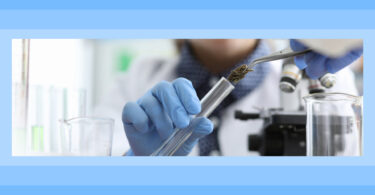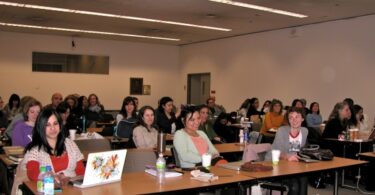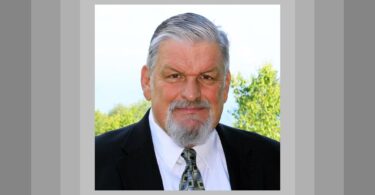I feel immense gratitude to Jiri Cehovsky and his son Filip for inviting me and for their assistance in helping me learn this wonderful practice called autopathy. I consider autopathy to be one of the biggest gifts in my life.
I have practiced classical homeopathy in the US for almost 30 years. I was planning to retire a few years ago, but then autopathy dropped into my life. After seeing my son treated with it (thank you to Jana Sieswerda), my curiosity was peaked. As with homeopathy, I pursued the study of autopathy intensely. I soon discovered that there are many similarities with homeopathy. As I launched into practicing autopathy, I fumbled often and made many mistakes along my steep learning path. I’d like to cover just a few observations from my practice because it might help other homeopaths entering into this wonderful healing modality. I will then follow up with an illustration case and my final remarks will cover important points I have learned that might be helpful to others.
Having based all my studies on Dr. Cehovsky’s book Get Well With Autopathy, I use this book as an illustration of how I started practicing two years ago. I quickly realized that I was pushing my clients in their healing far too rapidly with very high potencies and with too frequent repetitions of their treatments. Having studied this further, and based on my experience with homeopathy, I think:
- Clients from the U.S. heal much more slowly. Their overall vitality appears to be much lower than in Europeans. About ninety nine percent of my clients are on some form of allopathic medication for chronic illness. In fact, among my peers, I know of no one who is my age or older that is not on at least one allopathic medication for the duration of their life.
- Many of my clients have suffered from some form of cancer. But, when I have a client who has arrived from Europe (or a relative arrived two or three generations previous), I know it is an uncomplicated case that is likely to heal rapidly.
- The highest potency I have prescribed successfully in my two years of practice is three liters (the amount of water used to make the homeopathic dilution).
- Most of my clients are highly independent and will alter their treatments without discussing the changes with me. As an example, one patient couldn’t throw out the treatment water (used to make the dilution), so she drank it, and another watered the plants with it. Americans will alter the frequency and potency at will, thinking it will hasten their healing. They will stop and start their treatments so as not to interrupt travel plans.
- All in all, American patients are an enterprising, independent, and adventuresome group to treat!
Let me illustrate with one case.
This is a 71 YO female patient who came to my practice in January of 2018 presenting with complaints of pain in her left axilla and a second site where she had a former IV chemotherapy port placed three years previous. These pains had persisted for four years following treatment for a very aggressive form of BRCA where the patient had been given a double lumpectomy followed by chemo and radiation.
Another complaint that followed her cancer treatment was a persistent bilateral lymphedema of the lower extremities for which she used bi-monthly lymph drainage massage as well as twice daily use of pneumatic pump stockings.
The patient also had a long history of Irritable Bowel Syndrome (IBS) in which constipation was her major complaint. She has a rigorous international air travel schedule, and each time she traveled (at least every two months) she has severe constipation lasting 3 or 4 days, followed by diarrhea for hours and abdominal cramping. This was followed by extreme fatigue for several days. Another major complaint was her overall lack of energy where she felt she had no more endurance for looking after her grandchildren. She was too tired to walk more than a mile, needs to take naps every afternoon, and is unable to play her favorite sport. If babysitting her grandchildren, she has no energy in the evenings and needs to be in bed by 8:00 PM. Other complaints include painful eyes, low back and neck pains that have persisted for years, left knee soreness from a previous injury, and heart palpitations.
I started the patient’s autopathy treatment with one liter of water, using just breath (not boiled) to be repeated every two days. I decided to keep her treatment very simple because of her rigorous travel but also because I judged she had a very low vitality and I didn’t want to push her too hard.
Initial follow up was after one month where the patient reported that the heart palpitations had cleared and she remarked that “my pulse feels stronger.” She also experienced some detoxification symptoms where headaches would come and go, and there were some looser BM’s. She thought that her right leg was showing some fluid loss.
Her next follow up was 6 weeks from the initial visit where she reported that her husband had noticed her being more relaxed overall. Also, her lumpectomy scar showed signs of healing, being less painful and it had a slight tingling sensation which she hadn’t experienced before. She reported her vision being clearer and eyes less “painful” and she suffered no joint pains. I asked the patient to add saliva to her treatment, continuing the use of one liter but also to boil the saliva and breath (BSB).
Three months after her initial visit, the patient was no longer needing afternoon naps, reporting that she “just feels stronger.” In fact, she reported being able to start up her favorite sport again. Her BM’s were back to normal, despite her rigorous travels. She was most excited to report that her hair was starting to grow back on her legs and eyebrows (now 4 years post-surgery). I recommended she continue BSB, one liter.
Seven months after the initial treatment, the patient returned complaining that “my health is declining.” She reported that she had discontinued autopathy treatment for two months because of her rigorous travel schedule, and stated that her health is declining. She had a case of severe poison ivy which she treated with a course of prednisone. This was all followed by a sinus infection and bronchitis (Hering’s Law of suppression) for which she was treated using antibiotics and a nebulizer. In addition, she complained of being exhausted, short of breath with any exertion, and the IBS had returned. She reported being in low spirits and the neck pain and sleep disruption returned.
The treatment I suggested, because it was clear to me the patient had relapsed, was to repeat the one liter BSB every day for three days followed by every third day.
Two weeks later the patient reported no need for the nebulizer (despite her MD wanting her to use it for the rest of her life), yet she felt her lungs had not quite fully healed. Her bowels returned to normal. She also reported that her energy was returning, the neck pain had resolved and for the first time since her surgery, the pain at the port site had fully healed. I advised her to continue with BSB but increase the treatment to every second day.
Two months later (10 months following original interview), after a series of international trips the patient felt that her lungs were fully healed, all her joint pains were resolved, bowels were normal and the axilla scar pain at the site of lumpectomies had fully resolved.
One year after the initial treatment the patient reported that it was “shocking to me that I have no bodily complaints.” She felt that her energy was great, and her reflexes were returning for her athletics (she is up to playing four days per week now). She has BM’s every day with no cramping, both scars (port and lumpectomy) have fully healed with no pain whatsoever, the lymphedema is slowly improving, and her white cell count is normal for the first time in five years. She reports a rash in the region of her gallbladder (Hering’s Law, poison ivy resurfacing), and her hair continues to grow. Best of all she stated: “I feel like I am healing.” At this point I decided to increase her treatment to 1.5 liter of BSB.
For the last minutes of my talk, I would like to summarize with some of the main principles that I follow when treating patients:
- I need to proceed very slowly with potency (the amount of water used to make the homeopathic dilution) and pace (the speed of repetition of the dilution).
- If the patient develops any NEW symptom (never reported nor present in their past) under my treatment (Hahnemann’s Organon, pp 249) then I know that I have pushed the patient with too high a potency or too fast a pace.
- If a patient feels worse after a change in potency or pace, then wait a few days. If the complaint does not resolve, it could indicate the following: a): the worsening could be from detoxification of the body as a result of healing or b): it could be that the vital force is bringing the complaint to the “surface “ to heal or c): it could be an indication of too high a potency or too fast a pace.
- Besides the client’s chief complaint, it is very important for me to inquire about the following at every visit: their mood, sleep and energy.
In conclusion, to become a really effective practitioner of autopathy, I find it very important that the practitioner treat as many patients as possible to gain experience. Also, it is vital that the practitioner herself be treated by an experienced practitioner so as to have an understanding of what it feels like to be on a healing path. And finally, one must study, lots of study. I can’t over-state this and reading the Organon is of utmost importance.
- In conclusion, I am grateful to be involved during a time when homeopathy takes its next quantum leap into autopathy. And for that, I am full of gratitude to Jiri.





Thank you for this example of using autopathy for this type of case. Jiri Cehovsky is constantly refining the method and it’s a wonderful tool.